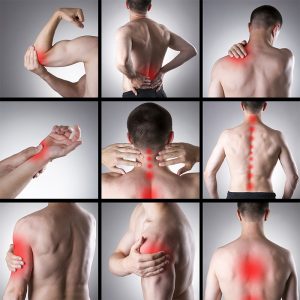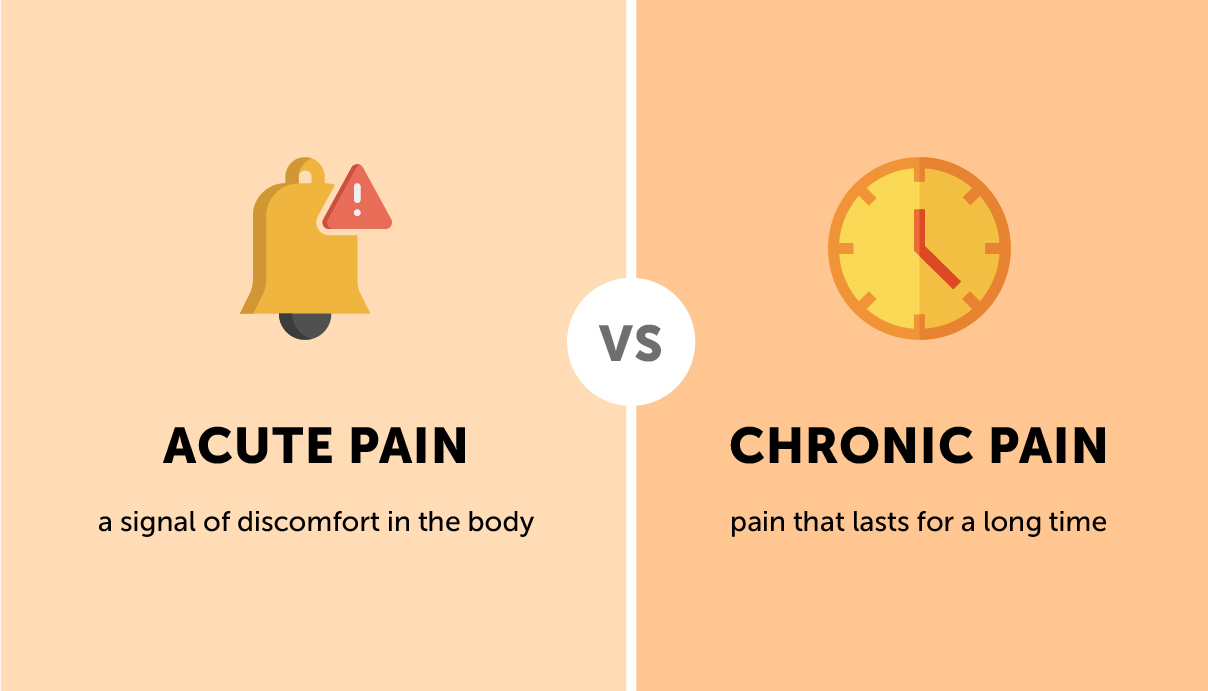Acute pain (tissue discomfort) versus Chronic pain (long lasting irritation)
What is pain?
Pain or discomfort derives from a physical injury, an emotional trauma, or distressing memories.
The chief function of pain is to direct your energies and attention to these states of irritation by inducing deep-seated anxiety to ensure that you know that your body is under threat. Very much like when you touch a burning stove. The shock and fear induce you to retract the hand in micro-seconds knowing that this danger could cause traumatic damage.

What does the nervous system do?
We now know through detailed brain imagery that acute pain (initial pain) travels up the spinal cord via the central nervous system from the site of the tissue damage and into the insula and anterior cingulate cortex which are activated when the tissue nociceptors or pain receptors are stimulated by pressure, swelling, or heat. Your brain and spinal cord constantly receive signals from your muscle spindles and the periphery of the skin to sense the world around us. This system controls your flexibility (or inflexibility) strength, control, and balance.
The spinal cord is like a messenger sending and receiving messages and making decisions in the form of reflexes letting the brain know how badly injured the tissues are. The brain gives the decision as to what to do and how to repair it. Every sensation however feathery light or intensely sharp is experienced through your emotional brain called the limbic brain or our third brain.
How does acute pain become Chronic pain?
If you have pain that heals and repairs quickly, we refer to this as acute pain. If the pain lingers especially for longer than 3 months, we call this chronic pain. New research suggests that the brain became used to the irritation and the nervous system is wired to overprotect and guard movements and the fear factor persists. Chronic pain according to brain scans tends to travel from the brain through the spinal cord down into the body even when there is no obvious tissue damage. The scans show that the emotional brain (limbic brain) lights up to a far greater extent and is far more involved with the experience of chronic pain.
It is suggested that we should be rethinking and reframing our techniques to treat chronic pain. A more integrative, holistic approach that includes physical therapy, meditation, and hypnotherapy and helping the client remove the anxiety and fear by adding acceptance and gratitude, and commitment which is part of cognitive therapeutic modalities. The most successful of which is called; “pain re-processing therapy”.
In a new book by Dr. Haider Warraich called “The Song of our scars; the untold story of pain”, he amusingly but succinctly describes present-day pain management by primary healthcare practitioners like chefs who don’t taste their own food. They dish out pain medication like opioids and ibuprofen without really understanding the real causes and effects and feelings of their patients. Treating chronic pain in the same way as you treat acute pain is a big mistake and has led to the opioid crisis around the world. Suffering begets more suffering.
Pain is worsened by psychological factors such as a lack of self-worth and depression. Dr. Warraich had chronic back pain himself and was afraid to do any exercise as he was told he would break his spine. In the end, it made his body weaker and his pain perception more tangible. He clearly states that the nervous system looks at chronic pain as an emotion we feel in our bodies.
The brain and pain
Every single body is different and there is no one size that fits all. We as physical therapy practitioners have a huge responsibility to hone our skills carefully in order to try to understand the triggers that our clients are experiencing from a longstanding memory of being hurt or traumatized as a child. With each experience that feels emotionally or physically unsafe, the brain learns to go into a protective mode more quickly and its warning system may become increasingly more sensitive. Health scares during childhood can have a big impact on how protective the nervous system becomes. Injuries or incorrect diagnoses can lead to a more intense experience of pain due to increased amygdala activity. Even the death of a loved one Changes in financial standing or a traumatic event can create this onset of “pain catastrophizing.”
A friend of mine had a high-pressure water hose thrust into his ear. He took Asprin to relieve the pain. Months later he would take Asprin and within seconds of taking it the pain would disappear. He then knew that his pain was psychological, and the pain memory was “Catastophising” the nervous system. Once he realized that and stopped the aspirin the pain went away in days, and never returned.
We know that our nervous system will go into overdrive when these triggers are not managed and therein lies the issue with over-stimulation that we refer to as being chronic pain. Since one in five people are affected by Chronic pain this affects 1.5 billion people around the world. This is a major new step in the treatments and understanding of pain management.
Chris Watts- Master mobility trainer
CEO Motion Dynamics
+852 28823397

